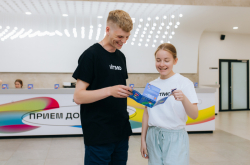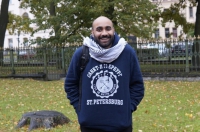Computer-human interaction is when we use various modern technologies, such as smart homes, online stores, even movement energy, to make our lives easier and safer. A separate area of such interaction is the surrounding intellect, which is all the devices in our environment that interact with us.
For such technologies to be successfully implemented, they must be both useful and easy to use. This why human-technology experts study both modern tech and how it’s used by humans.
Turunen’s Lab carries out a wide range of multidisciplinary research into technology-mediated novel ways of multimodal interaction with devices, environments and people. Master’s degree students are actively involved in R&D.

One of its projects was a mobile app for elevators developed for KONE. Users can call a lift to their floor from anywhere in the building, create a call button from their "favorite" floor and so on. The company's goal was to optimize the flow of people on premises and reduce wait time. According to the professor, users appreciated the application. It can also help collect the data on logistics inside large, multi-story buildings to improve their design.
The Living Lab Bus project helps improve various services based on the data from electrical public busses. The data is collected from sensors and passenger reviews and can relate to completely different areas. It is already being used for monitoring the weather and air quality as well as analyzing the behavior of drivers to improve road safety. Passengers can even review en route advertising.
Several applications use gaming to drive results. One recent project helps users learn a foreign language by offering to find their way around a foreign city on a giant screen. In a game called Bossi, participants hone their management skills in real management cases.
The number of applications in the field of human-technological interaction will only grow, given that any surfaces and devices will become more interactive, noted Turunen. For example, the walls in the apartment will be able to react to touch. The cameras in stores will recognize customer preferences based on their social network accounts. Refrigerators already know how to communicate with their owners and order food on the Internet.

"There are more and more companies that want to use new technologies, but they don’t always understand which technologies suit them. Our task is also to analyze their requests and understand what technologies they need. Often there’s a better option than the one they want. Therefore, in our work we need to be able to analyze different possibilities, approach problems from different sides," said Turunen.
To enroll in the Human-Technology Interaction Master’s program, one must have a bachelor's degree with a major close to this field and also pass one of the international English tests. The program includes courses on interactive technologies (graphical interfaces, speech recognition, speech recognition, motion, touch, sight, VR, AR), courses on studying human behavior, as well as a block of classes for writing a master's thesis and developing your own project.
ITMO University can also participate in short-term, individual projects Markku Turunen and his group as an invited researcher, and also take a separate course. For detailed information, please contact the ITMO University International Educational Programs Department.





